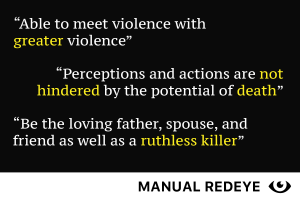OPINION: Support your friends a little extra this winter
December 11, 2020
The holidays generally have a happy, festive feel associated with them; whatever and whenever you celebrate, the act of gift-giving, spending time with family and relaxing over the holiday break can be a happy time. The regular stressors of school, work and obligations are forgotten while you bask in the holiday cheer in the winter. However, while the wintertime brings holidays and relaxation, it also comes with gloomy weather — leaving nature’s color palette set to a dull, grim gray. Leaves are falling off the trees, the air becomes nippy and days become darker.
This change in weather can be a simple annoyance to a lot of people, but it can affect others much more deeply, especially those with predisposed to mental illness. This has become increasingly common and is now recognized as a specific mental disorder: Seasonal Affective Disorder (SAD). According to the Diagnostic of Statistical Manual of Mental Disorders (DSM-5), it is identified as a type of depression with “seasonal patterns.” While it is similar to Major Depressive Disorder and its symptoms, those with SAD typically experience the symptoms at the same time each year, most commonly during the colder months.
This winter, the dreary weather is paired with another culprit of diminishing mental health; COVID-19. Dealing with the effects of seasonal depression coupled with the isolation of being in a pandemic can leave many of us struggling to stay positive, even with the holidays coming up. As we go further into the season, it is very important to not only look after your own mental health but check up on the people and loved ones around you; it could be a hard time for them.
Mental illness during COVID-19
A study conducted by Oxford University used electronic health records for 69.8 million patients in the United States, with 69,000 of them being diagnosed with COVID-19. They found that 1 in 5 people diagnosed with COVID-19 is diagnosed with a mental disorder such as depression, anxiety or insomnia within 14 to 90 days of their diagnosis; and, according to one of the study’s authors, they’re twice as likely to be diagnosed with a mental disorder than a patient with the flu. However, it is clear that a COVID-19 diagnosis isn’t the only thing affecting our mental health during the pandemic. There is an extreme sense of isolation and fear for a lot of people right now. The CDC conducted a survey from June 24-30 that found that 40.9% of respondents “reported at least one adverse mental or behavioral health condition,” and 30.9% reported symptoms of an anxiety or depressive disorder. Additionally, 13% of respondents reported an increase in substance abuse and 11% have seriously considered suicide.
Even though this research is scary to look at, we don’t need statistics to understand the severity of this virus — COVID-19 has uprooted all of our lives in one way or another. Healthcare workers are on the frontlines every day risking their lives, children are unable to attend in-person school and everyone in the country is taking the necessary precautions to stop the spread of the virus — which comes with a lot of isolation and alone time. Families are facing the stress of working and caring for their children at home, students are adjusting to a new, virtual learning environment and on top of everything, a virus is going around, threatening the lives of us and our loved ones.
Whatever challenges COVID-19 has posed for you, your struggles and feelings are valid. While you don’t want to self-diagnose mental disorders — something affecting so many people every day way before the pandemic — it’s important to stay aware of your symptoms and mental state and know it’s completely normal to have feelings of loneliness and uneasiness during this time; but again, anxious thoughts and sadness do not equal a diagnosed mental illness. If these symptoms are persistent and affecting your daily life, however, listen to your body and seek help wherever you can.
Seasonal Depression during a pandemic
SAD comes in two types: spring-summer SAD and fall-winter SAD, with the latter being more common. A reported 5% of adults suffer from this disorder, but it is likely that many more of the population experiences it unknowingly. Symptoms of fall-winter SAD include oversleeping, appetite changes, weight gain and tiredness/low energy.
The cause of this disorder is unclear; however, the National Institute of Mental Health found a few common biological cues including trouble regulating serotonin (the happy chemical), an overproduction of melatonin (sleep chemical) and a decrease in the production of vitamin D.
Feeling the symptoms of depression at the same time every year can be hard enough, not to mention the effects of COVID-19 looming in the air. Darker days and colder weather also mean even more isolation; the socially-distant hangouts we had to get by in the summer are harder to plan in the colder months. That lack of connection among our peers only worsens symptoms of SAD. Social interaction keeps a lot of us going in the winter, so taking that away feels lonelier than ever.
Combining COVID-19 and seasonal depression does not bode well with a lot of people; no amount of holiday cheer can dull the darkness those struggling with mental illness feel every day.
What you can do
As we enter a “mental health pandemic” of our own this winter, it is important to not only be aware of your mental wellness but to check in on others around you. If someone with SAD in a normal year usually struggles with depression, it is likely that they’re feeling even worse this time around. If you or someone you know is experiencing SAD or its symptoms, consider these tips:
1. Stay connected
The biggest culprit of SAD and COVID-19 is isolation. In the safest way you can, it is so important to stay updated and connected with a tight-knit circle of friends and family. Leaning on each other and checking in, even virtually, lessens that loneliness and darkness of winter.
2. Self-care
When social interaction isn’t an option, focusing on yourself is more important than ever. Self-care looks different for everyone based on your needs, but things like exercise, spending time outdoors or watching some bad television to unwind can be an escape from the current state of things.
3. Let the light in
Sunshine is your friend! Even though winter is upon us and the days are colder and darker than ever, make sure to take advantage of those limited sunny days. Even opening the curtains in the bedroom will let the natural light into the room to make the hard days a little easier.
4. Therapy/Medication
While lifestyle changes may lessen the symptoms, the issue can be much more serious. Talking through your feelings with a therapist combined with antidepressants could be the more aggressive treatment plan that will make the wintertime easier to endure. Talk therapy also gives you a chance to make plans and prepare for the mood change you are going to experience in the fall and winter.
Whichever method you choose, it is crucial that you are paying attention to your mental health during these times. It’s a stressful time for everyone, but someone you’re close to could be struggling to hang on this season. Be mindful, aware and there for your loved ones.









